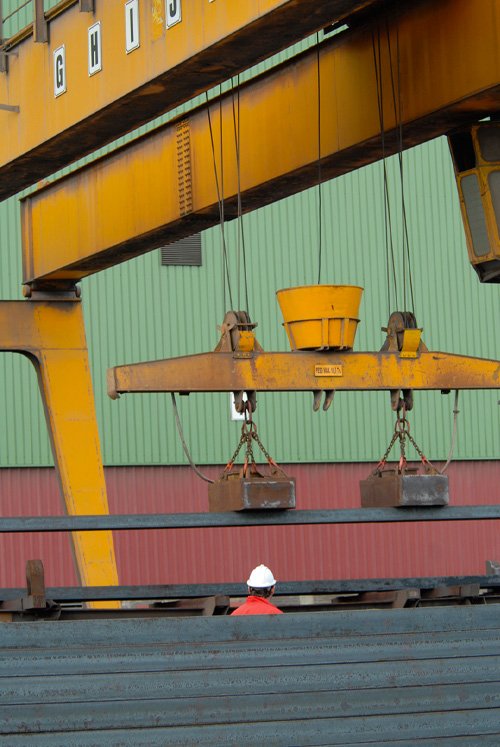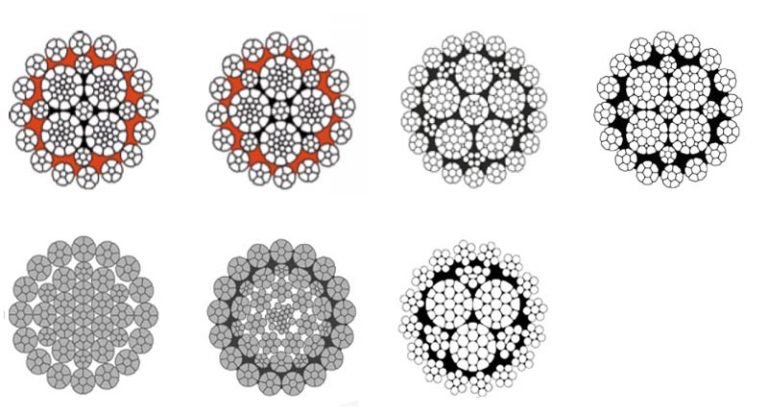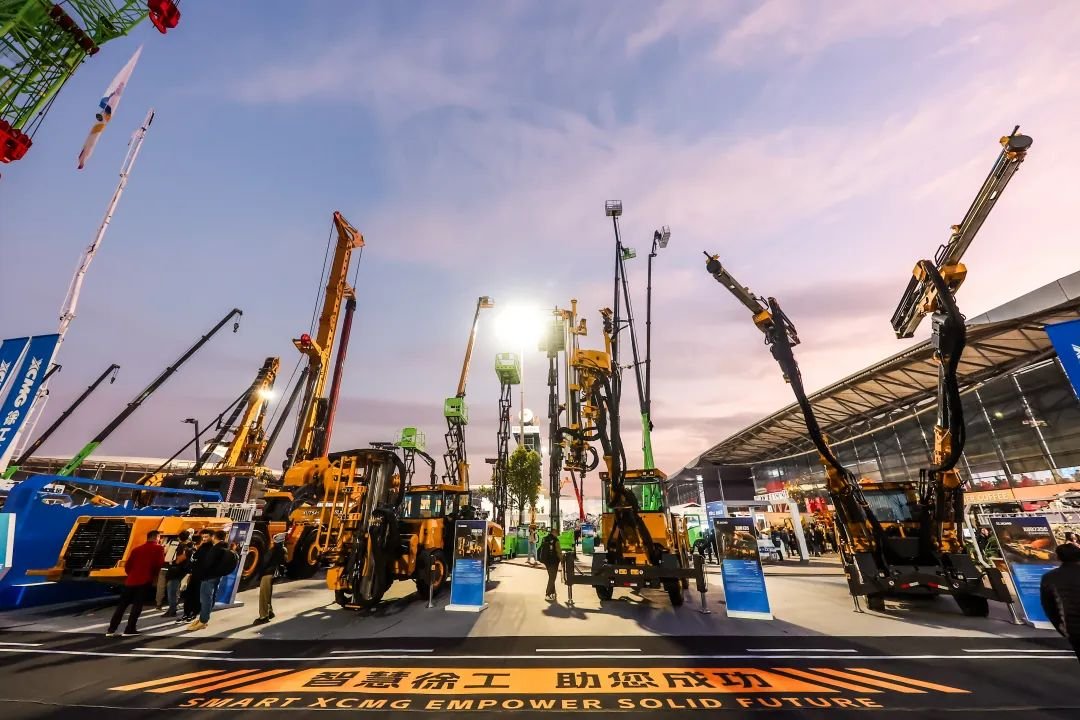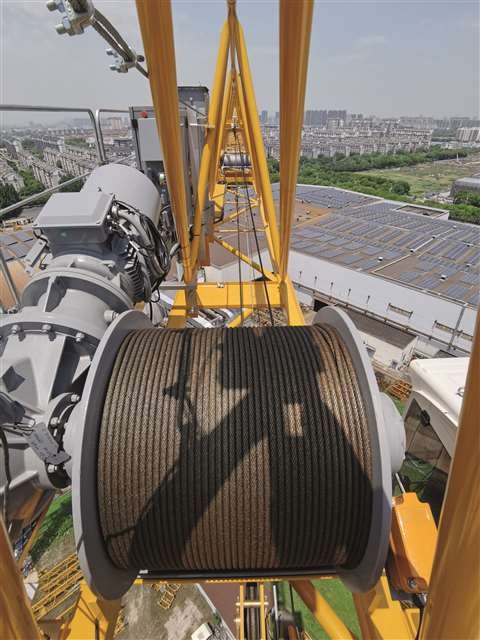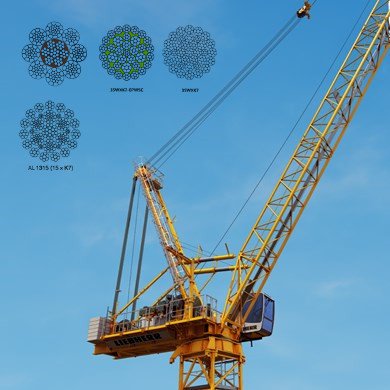Inspection Frequency
Daily or Pre-Use Inspection
Purpose: Identify obvious signs of damage before use.
Actions:
Visually inspect the entire length of the rope.
Look for broken wires, kinks, and visible corrosion.
Check end fittings and attachments for security and wear.
Documentation: Record any findings in a logbook, noting the date and inspector’s name.
Weekly Inspection
Purpose: Conduct a more thorough check to identify early signs of wear or damage.
Actions:
Perform a detailed visual inspection.
Run hands along the rope to feel for abnormalities.
Check the rope’s diameter and look for any reductions.
Inspect sheaves, drums, and other components for alignment and wear.
Documentation: Update the inspection log with detailed notes on the rope’s condition.
Monthly Inspection
Purpose: Conduct a comprehensive check to assess the overall condition of the rope.
Actions:
Perform a visual and physical inspection.
Measure the rope diameter at several points to check for uniformity.
Look for signs of internal corrosion by opening up strands if possible.
Ensure proper lubrication by checking the condition and level of lubricant.
Inspect rope terminations and end fittings for wear and integrity.
Documentation: Maintain detailed records of findings and any maintenance performed.
Periodic Comprehensive Inspection (Every 3-6 Months)
Purpose: Conduct a thorough assessment of the rope’s condition, especially in heavy-duty applications.
Actions:
Disassemble and inspect end fittings and terminations.
Conduct a magnetic or electromagnetic inspection (if available) to detect internal flaws.
Evaluate the rope’s performance under load to detect any functional issues.
Review previous inspection records to identify trends in wear and degradation.
Documentation: Compile a comprehensive report, including detailed inspection results and any recommended actions.
Specific Inspection Checks
1.Visual Inspection:
- Broken Wires: Identify and count broken wires, especially in critical areas such as end fittings and sections that experience repeated bending.
- Corrosion: Look for rust and corrosion, particularly in areas exposed to harsh environments.
- Kinks and Deformations: Check for kinks, twists, or other deformations that can compromise the rope’s integrity.
- Abrasion: Inspect areas where the rope contacts surfaces for signs of abrasion and wear.
2. Physical Inspection:
- Diameter Measurement: Use calipers to measure the rope’s diameter at multiple points along its length. Compare with the original diameter to assess wear.
- Tactile Check: Run hands along the rope to feel for broken wires, rough spots, or other irregularities.
3. Operational Inspection:
- Performance Monitoring: Observe the rope during operation to identify issues such as uneven spooling, excessive vibration, or unusual noises.
- Load Testing: If feasible, conduct a load test to evaluate the rope’s performance under typical working conditions.
4.Lubrication:
Check Lubrication: Ensure the rope is adequately lubricated to reduce internal friction and prevent corrosion.
Reapply Lubricant: If lubrication is insufficient, apply the appropriate lubricant according to the manufacturer’s specifications.
Documentation and Records
Inspection Log: Maintain a detailed log of all inspections, including dates, findings, and actions taken.
Maintenance Records: Document any maintenance performed, such as lubrication, repairs, or replacements.
Trend Analysis: Review inspection and maintenance records regularly to identify trends in wear and plan proactive maintenance.
Replacement Criteria
Broken Wires: Replace the rope if the number of broken wires exceeds industry standards or manufacturer recommendations. Typically, replacement is recommended if:
1. More than 10% of the wires in any strand are broken.
2. More than 5% of the total wires are broken within a lay length.
Diameter Reduction: Replace the rope if the diameter reduction exceeds 10% of the original diameter.
Corrosion: Replace the rope if there is significant corrosion that compromises its strength.
Deformations: Replace the rope if there are severe kinks, bends, or other deformations.
End Fittings: Replace the rope if end fittings are worn, cracked, or otherwise compromised.
Manufacturer’s Guidelines
Always refer to the manufacturer’s guidelines for specific inspection intervals, criteria, and procedures. Manufacturer recommendations should take precedence over general guidelines.
By following these detailed guidelines, you can ensure the safe and efficient use of 19×7 wire ropes in your operations. Regular and thorough inspections are crucial to maintaining the integrity and performance of wire ropes, thereby preventing accidents and equipment failures

